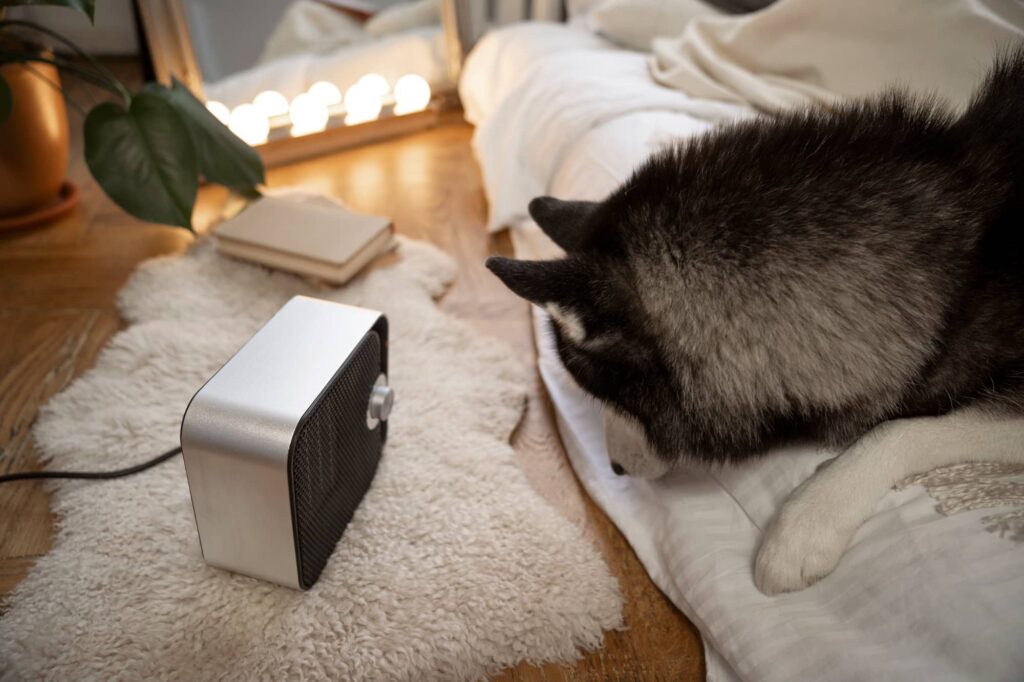When it comes to staying warm during the colder months, portable heaters offer a convenient and efficient solution. Among the most popular options are ceramic and infrared heaters. Both types have unique features and benefits, but which one is best suited for your needs? Let’s dive into a detailed comparison and explore their technical features.
How They Work
Ceramic portable heaters operate by passing electricity through a resistive heating element, which then heats a ceramic plate acting as a heat exchanger. The warm air is distributed using an integrated fan, enabling the heater to warm up spaces quickly and evenly. This design makes ceramic heaters an excellent choice for enclosed areas that need consistent, even heating.
Infrared portable heaters utilize quartz or carbon filament tubes to emit infrared radiation, directly heating objects, surfaces, and people within their line of sight. Unlike ceramic heaters, they bypass the air entirely, providing an efficient and immediate heat source. Infrared heating mimics the natural warmth of sunlight, making it ideal for targeted comfort.
Key Technical Differences
-
Heating Efficiency
Ceramic heaters, with typical wattage ratings between 1500-2000 watts, are efficient for warming small to medium-sized rooms. Their fan-assisted design ensures even heat distribution, making them highly effective in closed spaces. Infrared heaters, with similar wattage, are specialized for heating objects and people directly, significantly reducing energy waste when consistent room-wide heating isn’t necessary.
-
Speed of Heating
Ceramic heaters take a moment to warm up the ceramic plate and circulate air. While this process is slightly slower, it effectively heats a room within minutes. Infrared heaters, in contrast, provide immediate warmth by directly heating targeted areas, offering comfort without any delay.
-
Area Coverage
Ceramic heaters excel at heating larger areas due to their ability to circulate warm air. They are best suited for rooms with minimal airflow disruptions. Infrared heaters, however, are more effective for focused heating in specific directions, with their range determined by the wattage and the heater’s line of sight.
-
Energy Consumption
Ceramic heaters tend to consume more energy over extended periods, primarily because of the fan and the need to maintain air temperature. Many models mitigate this with energy-saving modes and programmable thermostats. Infrared heaters, designed for spot heating, consume less energy for short-term use. Adjustable power settings and timers further enhance their energy efficiency.
-
Noise Levels
The fan in ceramic heaters produces noticeable noise, generally ranging from 30-50 decibels. While not overly disruptive, this can be a consideration in quieter environments. Infrared heaters operate silently, as they lack moving parts, making them perfect for spaces where silence is key.
-
Safety Features
Ceramic heaters typically include built-in safety measures like tip-over protection, overheat shut-off mechanisms, and cool-to-touch exteriors, making them safer for households with children or pets. Infrared heaters, while emitting direct heat, now come with similar safety features such as tip-over switches and protective grilles to ensure secure operation.
-
Design and Aesthetic Appeal
Ceramic heaters prioritize practicality, often featuring compact, lightweight designs that are easy to move and integrate seamlessly with home decor. Infrared heaters, on the other hand, are available in stylish designs and can even resemble fireplaces, combining functionality with aesthetic appeal.
Pros and Cons
Ceramic heaters offer quick and consistent room heating, making them ideal for enclosed spaces. They are widely available, affordable, and include essential safety features. However, the fan noise and potentially higher energy consumption for prolonged use are drawbacks to consider.
Infrared heaters shine in providing instant, targeted heat with silent operation, making them energy-efficient for localized warmth. Their stylish designs add to their appeal. The primary limitations are their reduced area coverage and the need for caution due to hot surfaces.
Which Should You Choose?
Choosing between ceramic and infrared heaters depends on your specific needs. If you’re looking to heat an entire room with consistent warmth and don’t mind some fan noise, ceramic heaters are a great option for family spaces and extended use. Conversely, if you need instant, localized heat with silent operation and energy efficiency, an infrared heater may be your best bet.
Both ceramic and infrared heaters are engineered to enhance comfort during the colder months. By evaluating your requirements and understanding their technical features, you can confidently select the heater that aligns with your lifestyle and keeps you cozy all winter long.

